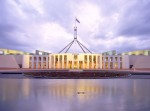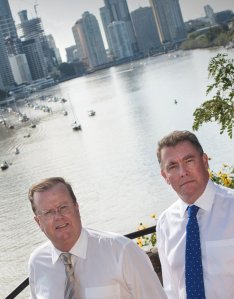Category Archives: Values
Why Trump Won 2*
Almost every election victory involves stitching together a coalition, and Donald Trump did so successfully.
Asking why Donald Trump won is quite a different question from “why did Hillary Clinton lose?”, and that latter question will be addressed in another article soon.
The difference between Donald Trump’s victory and a defeat was very small: small margins in a small number of states.**
Because the margin was so narrow in those three or four states which Donald Trump won by small margins, many things, some big and some small, made the difference between a win and a loss.
Because so many events, activities, mistakes, and so on could each have driven the comparatively small margins by which Donald Trump secured victory, it means every commentator’s preferred reason(s) for victory can be claimed as THE reason for the result – everyone is right, and everyone wins a prize.
However there are bigger reasons why Donald Trump was able to secure victory, whilst so obviously unfit for the job. He should have been, by most criteria***, 30% behind and not just 2.2%.
For 23 years, Republican Party Members of Congress, bloggers, activists, and more, attacked Hillary Clinton. Regardless of the validity of those attacks, they constructed a consistent narrative about the character of Hillary Clinton, and built substantial distrust and dislike of her. That branding of Hillary Clinton was in place before she nominated, was present for the whole of the campaign, and was referenced often by many amongst Donald Trump’s supporters. According to this narrative, she is an out-of-touch, remote elitist, focussed on her own advancement, and untrustworthy.
With many voters there was also a significant element of misogyny, synergising with the Republicans’ long-term branding of Hillary Clinton, which undoubtedly influenced their choice of candidates.
The Republican Party’s management of Hillary Clinton’s image, and the Trump campaign’s exploitation of that image, drove some voters towards Donald Trump, but also drove some voters, normally voting Democrat, to choose to abstain (see here about US voluntary voting).
The active things the Trump campaign deployed included the exploitation and maximisation of discontent: he branded himself as the voice of frustration, the voice of change, anti-elite, and anti-the system, which contrasted with Hillary Clinton’s image as part of “the system”.
His pivot to Republican orthodoxy, evident during the third presidential debate, was the point at which he began to win back the support of the Republican base, and their activists.
News articles are only now emerging which describe his under-the-radar campaign organisation, which to most commentators during the campaign did not appear to exist. Recent articles propose the data capabilities of the Trump campaign are competitive with the previously superior Democratic party machine, and the Obama campaign: while this may be the case, there is currently insufficient information in the public domain to allow a judgement.
The Trump campaign’s messaging was also effective: it was consistent, relentless, careful, and emotion-focused.
So Donald Trump was able to overcome what should have been unelectability, because
- the Republican Party had invested cleverly in constructing his opponent’s image over the long-term, and the Trump campaign exploited that investment
- his own campaign probably functioned more effectively than most people gave it credit for
- his messaging was effective and delivered the voters he needed, and
- he built a winning coalition of voters: most of the Republican base, and voters discontented with many elements of the American system of government.
* Just in time for inauguration day, this evaluation is based on observations from within the campaign and reading about it
** Hillary Clinton actually won the popular vote by around 2.2%.
*** We’re going to talk about those differing criteria in the coming article about the reasons for Hillary Clinton’s loss.
US Elections – How Donald Trump Won
 Compare Michigan and Pennsylvania. Donald Trump clearly won the latter through a massive turnout of rarely-votes in the middle of the state (see www.philly.com/philly/infographics/400507161.html) and appears to have won the former by winning over previous Democrat voters (see www.lansingstatejournal.com/story/news/local/michigan/2016/11/11/donald-trump-michigan-counties-clinton/93641908/) – though more analysis will give a better picture.
Compare Michigan and Pennsylvania. Donald Trump clearly won the latter through a massive turnout of rarely-votes in the middle of the state (see www.philly.com/philly/infographics/400507161.html) and appears to have won the former by winning over previous Democrat voters (see www.lansingstatejournal.com/story/news/local/michigan/2016/11/11/donald-trump-michigan-counties-clinton/93641908/) – though more analysis will give a better picture.
That’s two entirely different ways of winning, in two important states.
Obama in the contested 2008 Primary had a successful State-by-State win plan: did Trump have the same in 2016? These different patterns in two critical states suggest perhaps he did.
Kellyanne Conway was his final campaign manager http://www.news.com.au/finance/work/leaders/the-woman-who-made-president-trump/news-story/766f339657fcb2429068b200adf166b5 and deserves major credit for his victory, but she took over only a scant 12 weeks out from election day – could she have created and executed such a state-by-state plan in so short a time? Her predecessors, incompetent and possibly corrupt, seem unlikely to have had such insight and coherence.
Insider-tell-all books after the 2008 and 2012 election cycle answered many questions about internal strategy development – the 2016 version may tell us whether there was such a plan, or whether luck and happenstance played a bigger part.
However, Kellyanne achieved in less than three months something much more formidable: she created a new candidate and a new election, and hence a winning coalition, by taming Trump.
Before the Presidential Debates, Trump had set about making himself the outsider who could upturn politics-as-usual and fix a failed system. His plain speaking, deliberately provocative and deliberately different from Republican orthodoxy, had built a loyal following amongst those alienated from the “American Dream”, but failed to broadly inspire evangelical Christians, and alienated moderate Republicans. His support, lacking those two components of the Republican base, was insufficient for victory.
Just prior to the October 19 third debate, his language moderated, his insults decreased, and the content of his ad-hoc statements became more coherent. At the third debate, he pivoted, pressed the case for the Republican Right’s hot-button policies, and they flocked to his banner. Post-debate, he became increasingly a more polished and less alienating candidate. Some of the moderate Republicans, contemplating voting for Hillary, moved back to the fold.
To the Republican base, Trump now looked – more-or-less – like a Republican.
Quite suddenly, the Clinton campaign faced a different candidate, who now led a coalition of the disaffected and the Republican base, to which they had no adequate counter. It’s not even clear they noticed the new candidate.
(Half of Ethical Consulting Services (Mike) has been embedded in the campaign since mid-October.)
US Elections – The Coward’s Pivot
 The third US Presidential debate yesterday was fascinating for many reasons, but most of all because it revealed Donald Trump, like all bullies, to be a coward; it also showed he’s capable of rational desperation.
The third US Presidential debate yesterday was fascinating for many reasons, but most of all because it revealed Donald Trump, like all bullies, to be a coward; it also showed he’s capable of rational desperation.
Donald Trump performs better each debate – he’s better briefed, more mannerly, and more rational. More of his sentences are completed. Hillary Clinton continues to display superior intelligence, depth, understanding, and thoughtfulness.
The big debate take-away:
It’s been proven time and again: if you must commit resources to activating your base your campaign is in trouble: someone has persuaded Trump, because his campaign is so desperately failing, he must proclaim conservative Christian orthodoxy, and gun-ownership focussed orthodoxy, to persuade Republicans to bother to vote for him. His debate performance wasn’t appealing to middle America – undecided, moderate and independent – when he talked so strongly about opposing abortion and stacking the US Supreme Court; he was talking to the Republicans who’ve seen him as a hypocritical libertine and dangerous bully, and weren’t voting for him.
Without them, he won’t just lose on November 8, he will be devastated, and the Republican Party’s other candidates with him. Without them, the Democratic Party must take control of the Senate and the House of Representatives, and many of the State legislatures and Governorships that are up for election on the same day.
He is indeed a narcissistic libertine; he has certainly previously supported abortion rights; he’s a very recent and probably temporary convert to this kind of conservative agenda, and it has come at the cost of keeping the True Donald in the public eye. At the end, lacking the courage of his own convictions, he’s prepared to adopt someone else’s.
His mealy-mouthed, half-unsaid, half-demand that a Supreme Court appointed by him should reverse Roe v. Wade, the most important Court decision about reproductive rights and obligations in US history, will have satisfied only the so-called right-to-life movement. He lacked the courage to unequivocally say he wanted it overturned … he took the coward’s approach of trying to conceal the promises he’s made to the Evangelical Christian Right.
There was a flash or two of the Real Donald, the bully strip-mining the hurt and pain of communities outside the economic and social elites: he’s contemplating refusing to concede defeat if he loses, suggesting fraud on a massive scale, and implicitly threatening to use his campaign to destabilise Clinton’s legitimacy, and the legitimacy of the electoral system, beyond Election Day*.
Before the debate, Trump’s surrogates and advocates talked about him pivoting his campaign, away from the confused melange of messages past, and towards a “Drain the Washington Swamp” theme. This debate performance, in contrast, was a pivot towards trying to save the down-ticket Republicans from the expected Clinton coat-tails.
Ethical Consulting Services partner Mike Smith is embedded within the US Presidential campaign, until US election day on 8 November.
- The next day, appreciating the furore, and harm to his aspirations, this had caused, he issues a typically weaselly non-retraction that he’ll claim as a retraction when convenient.
US Elections – Explained, Sort Of
 While Mike from Ethical Consulting Services is embedded in the US Presidential election campaign, he’s found a few articles that explain some of what’s going on.
While Mike from Ethical Consulting Services is embedded in the US Presidential election campaign, he’s found a few articles that explain some of what’s going on.
Some of these might interest you, but feel free to suggest interesting articles of your own!
- You can’t go past the fivethirtyeight blog for an explanation of the polling: http://fivethirtyeight.com/politics
- A really interesting anecdotal article about what drives people to support Donald Trump http://newrepublic.com/article/136328/red-state-blues
- Does self-interested smugness amongst the affluent, liberals, and lefties taint analysis of who votes for Trump and why? www.theguardian.com/media/2016/oct/13/liberal-media-bias-working-class-americans
- This article tells an early – and heavily redacted – story about the way the Clinton campaign uses data for targeting www.politico.com/magazine/story/2016/09/hillary-clinton-data-campaign-elan-kriegel-214215
- Hillary Clinton suffering from concealed anti-woman sentiment and double standards, argues this article www.huffingtonpost.com/larry-womack/stop-pretending-you-dont-_b_12191766.html
- Incomplete but useful rebuttal of the Hillary Clinton myths, rumours and conspiracy theories www.forwardprogressives.com/debunking-anti-hillary-clinton-myths-lies-conspiracies/
- How Facebook is being used for campaigning in the US Presidential election http://www.wsj.com/articles/how-facebook-is-dominating-the-2016-election-1475429365?mod=WSJ_TechWSJD_topRight
- What happens two years down the track from this election – the US mid-term elections in 2018 http://fivethirtyeight.com/features/the-party-that-loses-this-year-could-still-win-a-big-consolation-prize/
If you want some background on what’s going on this election cycle, try this article.
On the major differences between US elections and Australian Elections, try this one.
For a discussion about the impact of voluntary voting on US elections, this might be useful.
And here’s a summary of what it mans to have to rebuild a US Presidential campaign machine very four years.
US Elections – New Every 4 Years
 They completely dissolve and re-form their Presidential campaigns every four years in the US, while in Australia the campaign machinery and personnel continue from one election cycle to another* – this is one of the big differences between Australian and US Election Campaigns.
They completely dissolve and re-form their Presidential campaigns every four years in the US, while in Australia the campaign machinery and personnel continue from one election cycle to another* – this is one of the big differences between Australian and US Election Campaigns.
This system in the US arises in large part because the Presidential campaign is so much a construct of the candidate, rather than the Party – based around the style and wishes of each individual candidate.
The downside of this system is the need to rebuild completely, and the capacity of a campaign to have to relearn hard lessons learned by previous campaigns. I’ve seen that happen – one candidate’s campaign, four years after some inspired organising, had quite forgotten how to manage a particular and important aspect of campaigning.
Another downside is that campaigns have to re-learn the local terrain and quirks, and consultants have to be re-inducted all over again.
And it also builds a resentment amongst locals, that the Presidential campaign has come in over the top of them, and taken over their turf, again, without seeming interested in local knowledge, or employing locals.
There are two big upsides, though:
- a complete rebuild every four years clears away the bad habits of the past, makes it easier to innovate, and reduces the desire to prosecute the battles of the last political war, and
- Presidential candidates get an opportunity to build the campaign which best reflects their values, strategies and interests – and consistency between campaign and candidate brand is very important!
So, the feel is very different from Australia, and it’s the same with both major Parties.
Better or worse than Australia? Maybe, on this issue, it’s simply different.
(Half of the Ethical Consulting Services team – that would be Mike – will be embedded within the US Presidential campaign, from mid-October: this year, US election day is 8 November.)
* With, in Australia, some uptake of new technology and some staff turnover, of course.
US Elections – What’s Happening?
 This year, US Presidential election day is 8 November.
This year, US Presidential election day is 8 November.
Half of the Ethical Consulting Services team – that would be Mike – is off, shortly, to embed within the US Presidential campaign, in Philadelphia.
This blog http://fivethirtyeight.com/politics/ is nearly always the best summary of where the competing Presidential stand in the polls. It’s easy to pick which states are critical, by checking out their maps and the blog.
Other elections are going on, as well:
- The US House of Representatives: All 435 seats are up for election, and some commentators are suggesting the Democrats could take control of the House:
- www.nytimes.com/interactive/2016/us/elections/election-2016.html and this article are good for basic information: http://en.wikipedia.org/wiki/United_States_House_of_Representatives_elections,_2016;
- The US Senate: Numbers are tighter, with 34 seats up for election: www.nytimes.com/interactive/2016/upshot/senate-election-forecast.html and basic information is here: http://en.wikipedia.org/wiki/United_States_Senate_elections,_2016;
- And Governorships (12 states and two territories) http://en.wikipedia.org/wiki/United_States_gubernatorial_elections,_2016 and dog-catcher and sheriff across the country! Some places elect judges, police chiefs and the folks who run elections – a friend of Mike’s was a few years ago elected to run elections in her home city.
Mike is hoping to blog about his experiences while he’s away, but these campaigns are hard work and he’s not promising.
And, why Philadelphia? Pennsylvania is usually a highly competitive state for the Presidential ballot, so campaigners get to see world-class campaigning (Mike was there in 2004 for John Kerry’s campaign, and 2008 and 2012 for the two Obama campaigns); plus, the polls are very tight in Pennsylvania right now, and Donald Trump has previously said he’ll target the State.
This also means our “Last Week in Queensland” weekly blogs and newsletters will be having a break, from 4 October to 21 November.
Last Week in Queensland – 15 February 2016
 The anniversary of the election of the Palaszczuk Government continues to generate plenty of media coverage, as do debates about the most appropriate policy response to alcohol-fuelled violence – read all about it in our weekly summary of last week’s news items, here.
The anniversary of the election of the Palaszczuk Government continues to generate plenty of media coverage, as do debates about the most appropriate policy response to alcohol-fuelled violence – read all about it in our weekly summary of last week’s news items, here.
You can get these updates every week without effort, by subscribing to our blog – there’s a box on the top right corner of this very page, immediately underneath our logo, that is just yearning for your email address!
Better Meetings: How?
 Do you spend too much time in meetings that drive you nuts and waste your time?
Do you spend too much time in meetings that drive you nuts and waste your time?
There’s remarkably little good advice around, about how to make your meetings better, so we’re fixing that.
You can try:
- this article from Bob Holderness-Rodham, which is reasonably simple and basic, or
- this blog post from us, which is a bit deeper, or
- this article from the Institute of Company Directors, which is mostly for higher-level and more formal meetings but does have many good suggestions,
or send us a message – we’re already helping others out with training and mentoring, customised to their needs!









